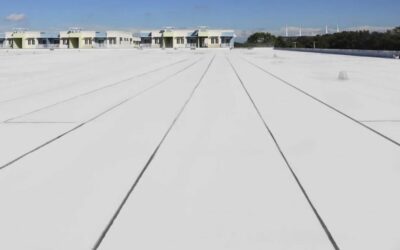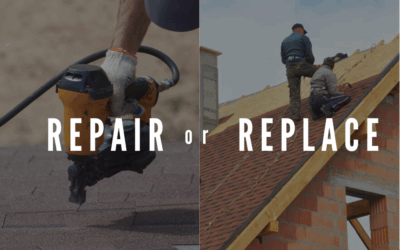Membrane Roofing: The Ultimate Flat Roof Solution for Northeast Ohio
When it comes to protecting flat or low-slope roofs, membrane roofing has become one of the most popular and reliable solutions in the roofing industry. Known for its durability, energy efficiency, and waterproofing abilities, membrane roofing systems are widely used on commercial buildings, apartment complexes, and residential homes.
At S&K Construction and Remodeling LLC, we’ve installed, repaired, and maintained countless membrane roofs across Youngstown, Cleveland, Medina, Euclid, Willoughby, Beachwood, Chardon, Madison, Mayfield Heights, Concord, and surrounding Northeast Ohio communities. As an Owens Corning Preferred Contractor, we take pride in delivering expert installation, high-quality materials, and long-lasting results.
In this guide, we’ll explore everything you need to know about membrane roofing — from the different types and installation methods to maintenance, costs, and whether it’s the right choice for your property.
What Is Membrane Roofing?
Membrane roofing refers to a category of flat and low-slope roofing systems that use synthetic materials to create a continuous, watertight surface. Unlike traditional built-up roofing, membrane systems typically involve a single-ply or multi-ply sheet that is rolled out and sealed, reducing seams and weak points.
Membrane roofs are designed to resist water infiltration, UV damage, and thermal expansion/contraction caused by temperature changes. This makes them ideal for Northeast Ohio’s freeze-thaw climate, where roofs need to withstand snow, ice, rain, and summer heat.
Types of Membrane Roofing
There are several types of membrane roofing, each with its own strengths.
1. EPDM (Ethylene Propylene Diene Monomer)
- A synthetic rubber roofing membrane known for flexibility and durability.
- Available in black or white.
- Typically installed with adhesives, mechanical fasteners, or ballasted systems.
- Lifespan: 20–30 years.
2. TPO (Thermoplastic Polyolefin)
- A single-ply reflective roofing membrane that helps improve energy efficiency.
- Heat-welded seams provide excellent waterproofing.
- Popular for commercial and residential use.
- Lifespan: 15–25 years.
3. PVC (Polyvinyl Chloride)
- Known for chemical resistance, making it great for restaurants or factories with rooftop exhausts.
- Welded seams and strong durability.
- Highly reflective and energy-efficient.
- Lifespan: 20–30 years.
4. Modified Bitumen Membranes
- Asphalt-based with added rubber modifiers for flexibility.
- Installed in rolls, either torched down or cold-applied.
- Excellent for areas with frequent temperature changes.
Benefits of Membrane Roofing
1. Superior Waterproofing
The continuous sheet design minimizes seams and drastically reduces the chance of leaks.
2. Energy Efficiency
White and reflective membranes like TPO and PVC can lower cooling costs in summer by reflecting sunlight.
3. Durability in Harsh Weather
Membrane roofs handle freeze-thaw cycles, heavy snow loads, and high winds exceptionally well.
4. Low Maintenance
With fewer seams and a smooth surface, membrane roofs are easier to maintain than gravel or built-up systems.
5. Lightweight
Membrane roofing doesn’t add excessive weight to the structure, which is especially important for older buildings.
Potential Drawbacks
While membrane roofing has many advantages, there are some considerations:
- Puncture Risk – Sharp objects or heavy foot traffic can damage the membrane.
- Installation Skill Required – Proper sealing is essential; poor installation can lead to leaks.
- Varies by Material – Some membranes have different maintenance needs and lifespans.
Membrane Roofing Installation Process
Installing a membrane roof is a precise job that requires experienced roofers. At S&K Construction and Remodeling LLC, our installation process includes:
Step 1: Roof Inspection & Preparation
We start by inspecting the existing roof and addressing any damaged decking or insulation.
Step 2: Choosing the Membrane Type
We help property owners choose between EPDM, TPO, PVC, or modified bitumen based on their budget, energy needs, and roof design.
Step 3: Installing Insulation
Polyiso, EPS, or XPS insulation boards are often installed to improve energy performance.
Step 4: Laying the Membrane
The membrane is rolled out and positioned across the roof.
Step 5: Securing the Membrane
- Fully Adhered – Glued to the substrate.
- Mechanically Fastened – Anchored with plates and screws.
- Ballasted – Held down with gravel or stone.
- Heat-Welded (TPO/PVC) – Seams are fused with hot air for a permanent seal.
Step 6: Flashing & Detailing
Special attention is given to penetrations like vents, skylights, and HVAC units.
Step 7: Final Inspection
We check every seam, flashing, and detail to ensure watertight performance.
Maintenance & Repair for Membrane Roofs
Membrane roofs are low-maintenance, but regular inspections are crucial to longevity.
Maintenance tips:
- Inspect twice a year (spring and fall).
- Remove debris promptly.
- Check seams and flashing after storms.
- Avoid unnecessary foot traffic.
Common repairs:
- Patching small punctures with compatible membrane material.
- Re-welding or sealing lifted seams.
- Applying protective coatings to extend lifespan.
Cost of Membrane Roofing in Northeast Ohio
Several factors affect the cost:
- Type of Membrane – EPDM is often the most affordable; PVC and TPO are mid-range.
- Roof Size & Complexity – Larger roofs require more materials and labor.
- Insulation Needs – Adding insulation increases cost but improves efficiency.
- Preparation Work – Tear-off and deck repairs add to the total.
In Northeast Ohio, expect to pay $5–$12 per square foot, depending on the system.
Lifespan of Membrane Roofs
- EPDM: 20–30 years
- TPO: 15–25 years
- PVC: 20–30 years
- Modified Bitumen: 15–20 years
Proper maintenance can extend these lifespans by several years.
Membrane Roofing vs. Other Flat Roofing Systems
| Feature | Membrane | Built-Up (BUR) | Torch Down |
|---|---|---|---|
| Weight | Light | Heavy | Moderate |
| Installation Time | Fast | Longer | Moderate |
| Maintenance | Low | Moderate | Low |
| Lifespan | 15–30 years | 20–30 years | 15–20 years |
| Waterproofing | Excellent | Excellent | Excellent |
| Energy Efficiency | High (white membranes) | Low | Moderate |
Performance in Northeast Ohio Weather
Membrane roofs are particularly well-suited to Ohio’s diverse climate:
- Winter: Flexibility prevents cracking from freezing temperatures.
- Summer: Reflective options reduce cooling costs.
- Storms: Heat-welded seams resist wind uplift and heavy rain.
Safety Considerations
Our team follows OSHA safety standards during every installation:
- Harnesses and fall protection.
- Heat-welding equipment safety.
- Proper material handling to prevent punctures.
Why Choose S&K Construction and Remodeling LLC for Membrane Roofing
We are not just another roofing company. Our difference is in:
- Owens Corning Preferred Contractor recognition.
- Service coverage across Youngstown, Cleveland, Medina, Euclid, Willoughby, Beachwood, Chardon, Madison, Mayfield Heights, Concord, and beyond.
- Skilled installation teams for all membrane types.
- Financing options for every budget.
- A reputation for quality work and customer satisfaction backed by excellent Google reviews.
Financing Options
We understand that replacing or installing a roof is a significant investment. That’s why we offer flexible financing so you can protect your property now and pay over time.
Final Thoughts
Membrane roofing is a durable, efficient, and cost-effective choice for flat and low-slope roofs in Northeast Ohio. Whether you choose EPDM, TPO, PVC, or modified bitumen, a properly installed membrane roof can provide decades of reliable protection.
If you’re considering a membrane roof for your home or business in Youngstown, Cleveland, Medina, Euclid, Willoughby, Beachwood, Chardon, Madison, Mayfield Heights, Concord, or surrounding areas, contact S&K Construction and Remodeling LLC today for a free consultation.
 (440) 307-2060
(440) 307-2060



